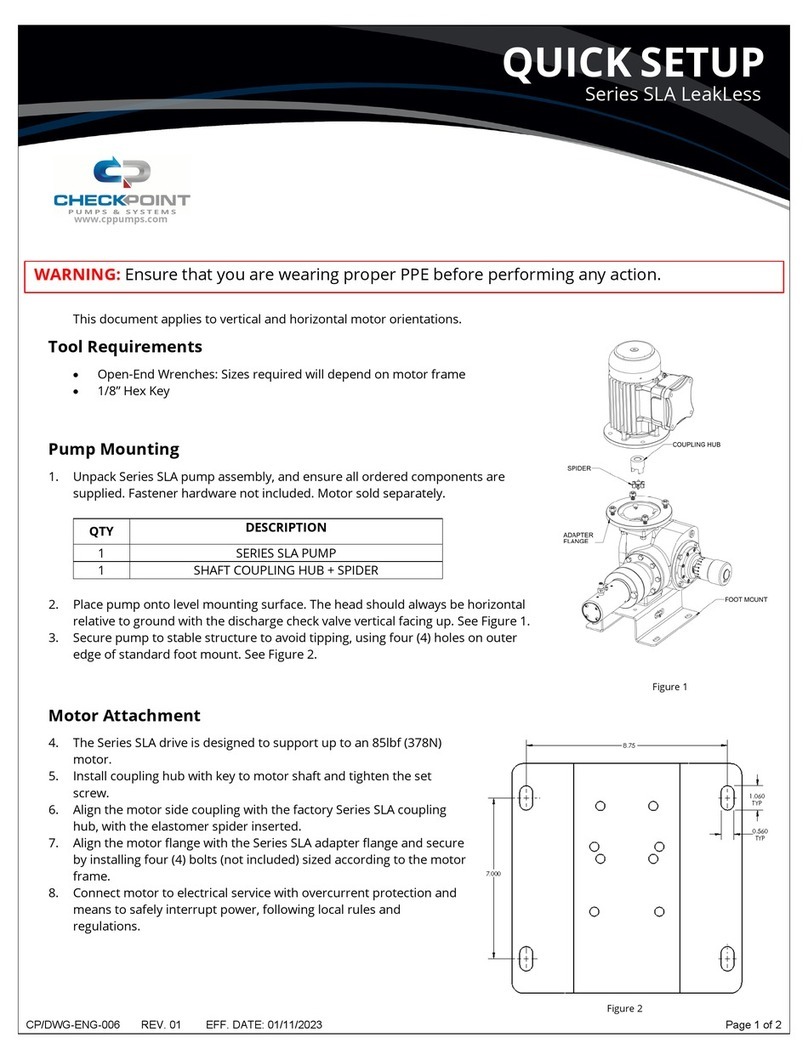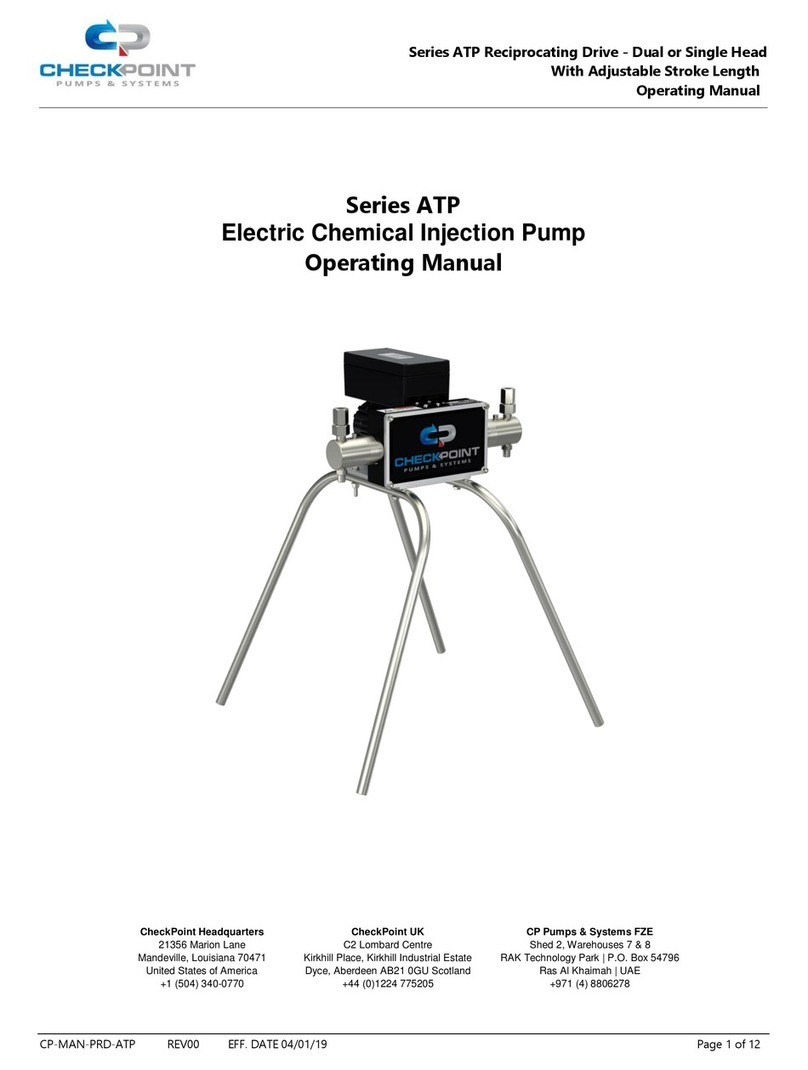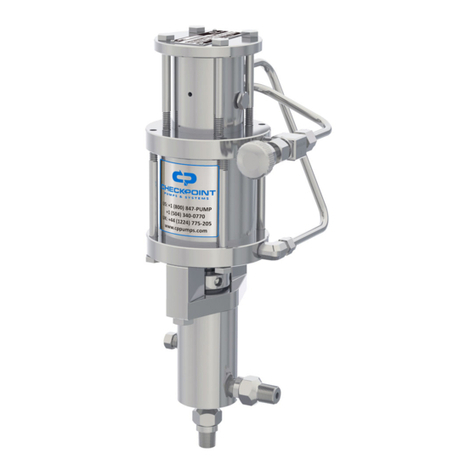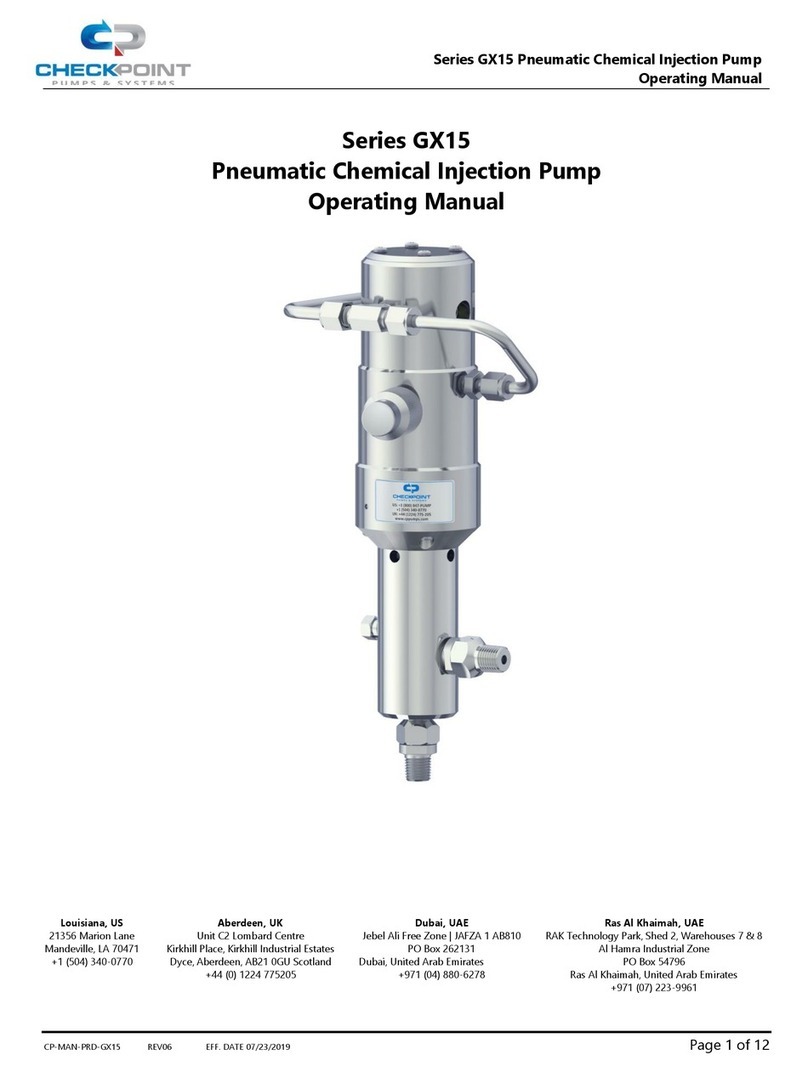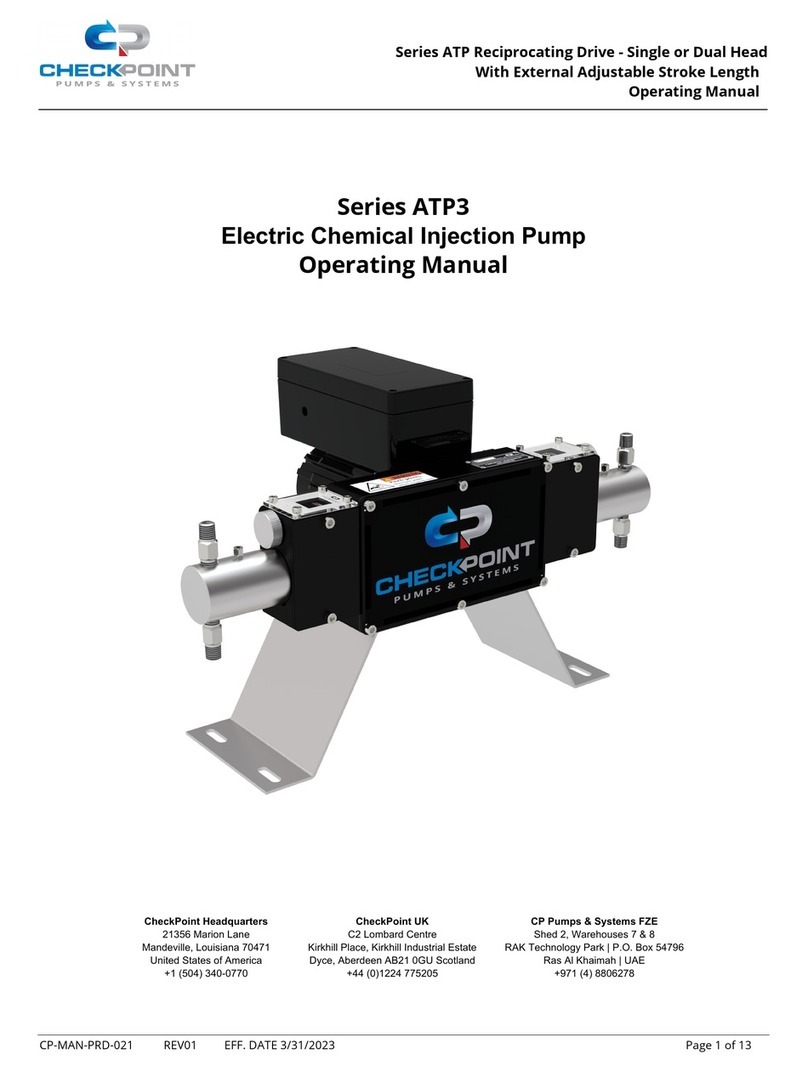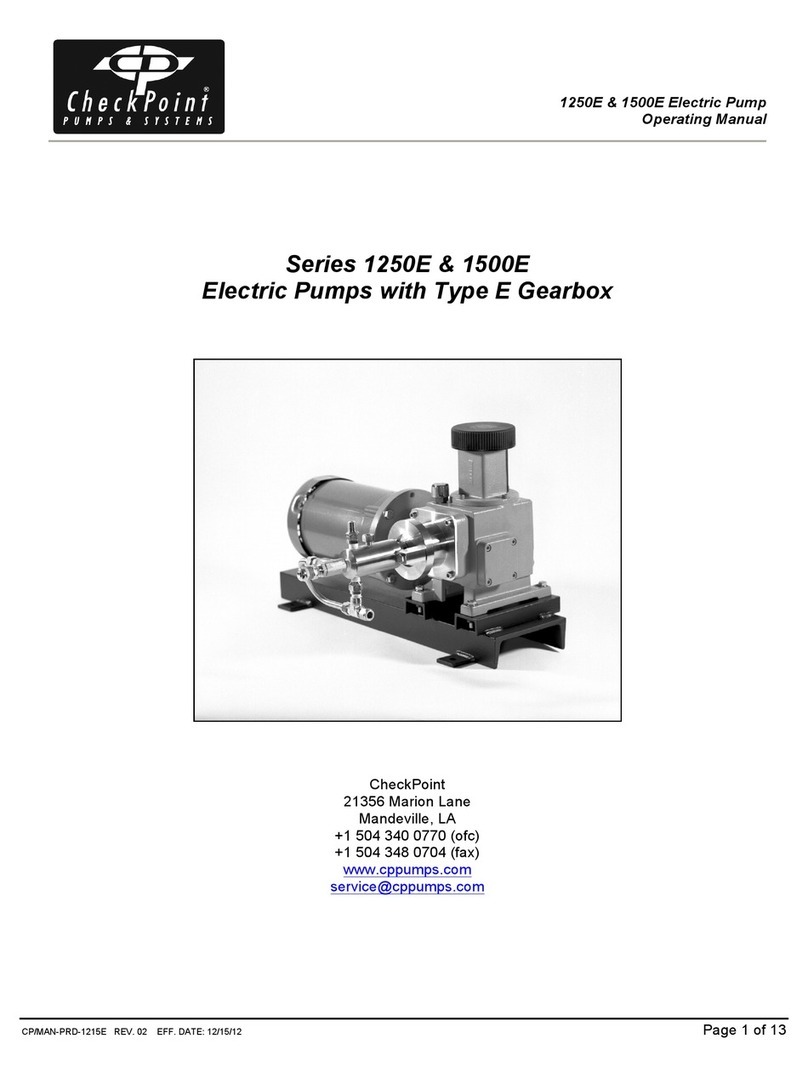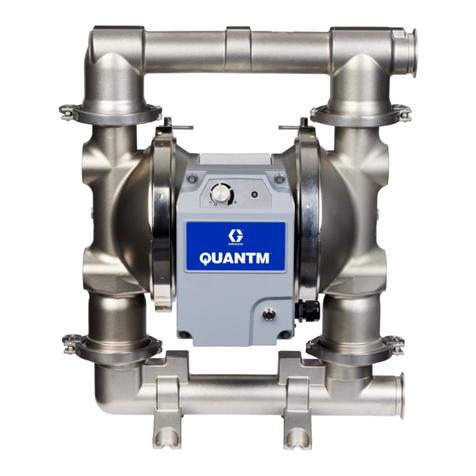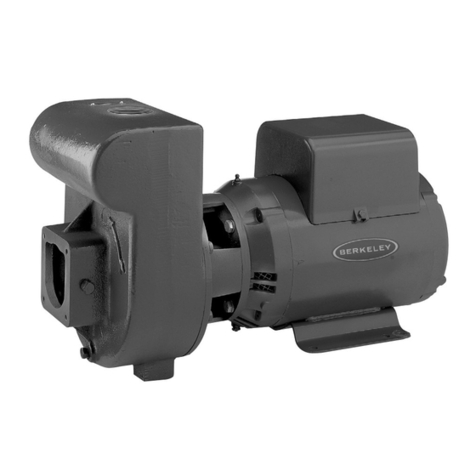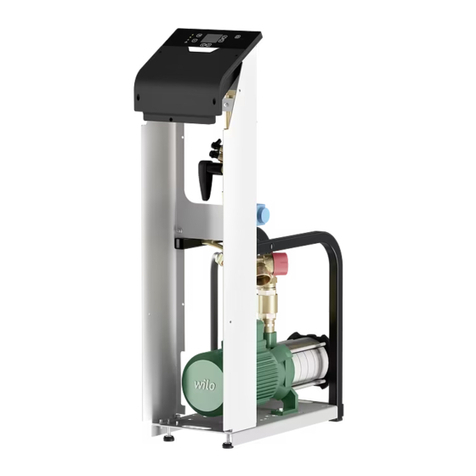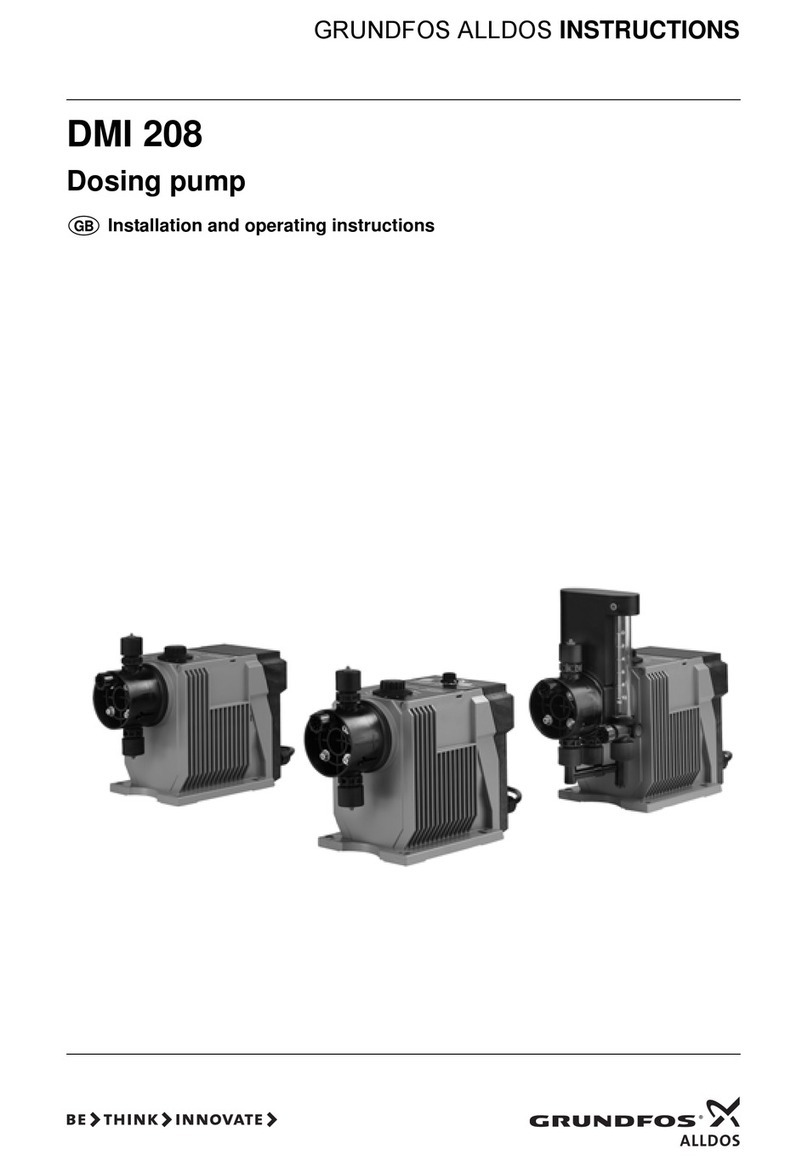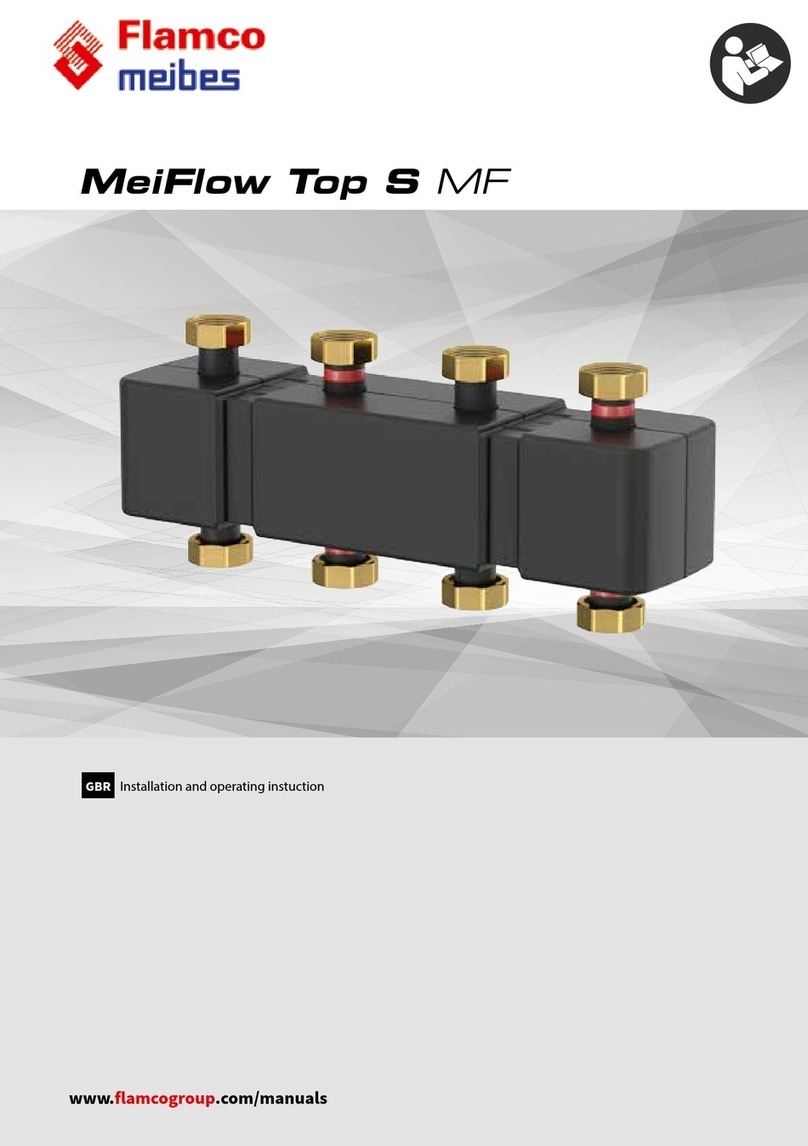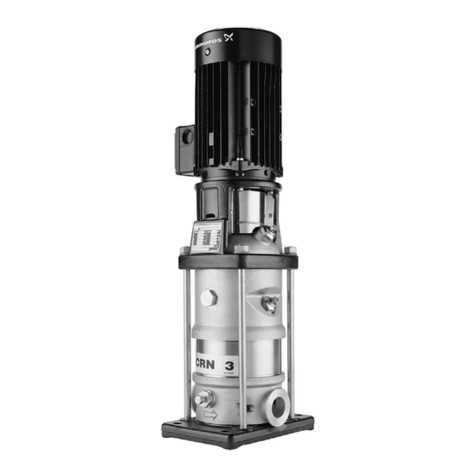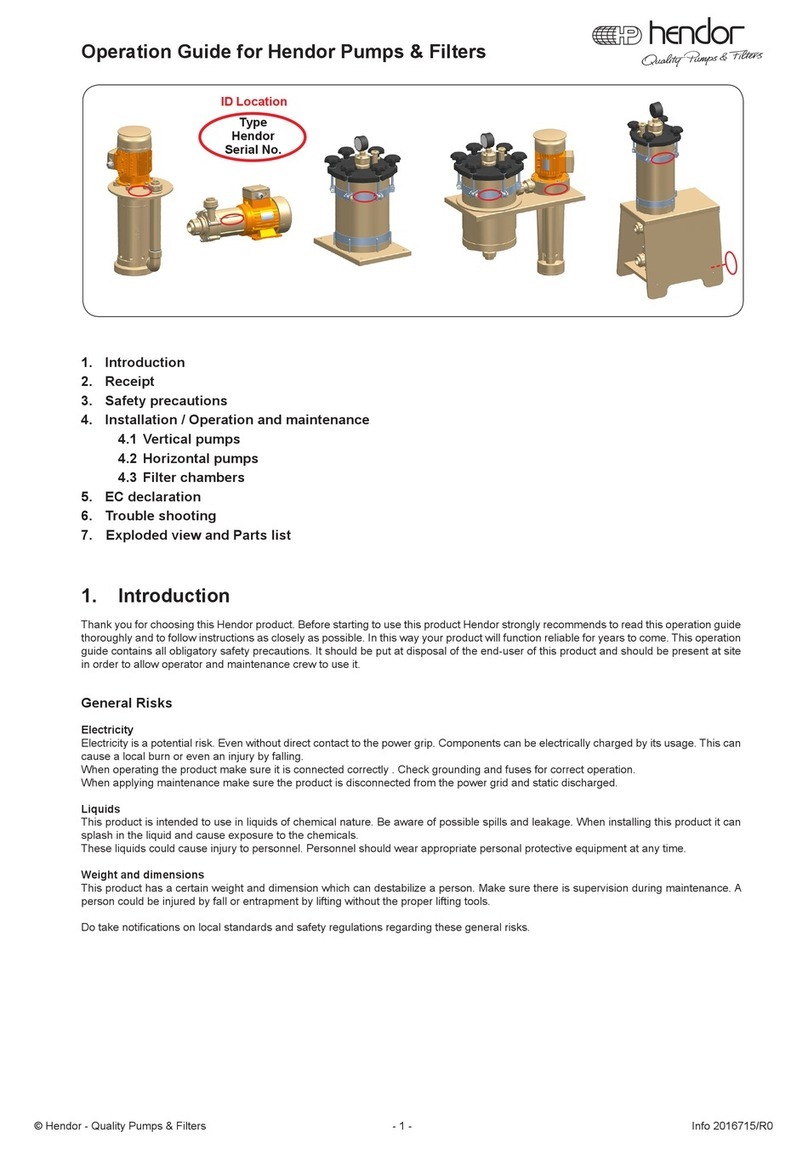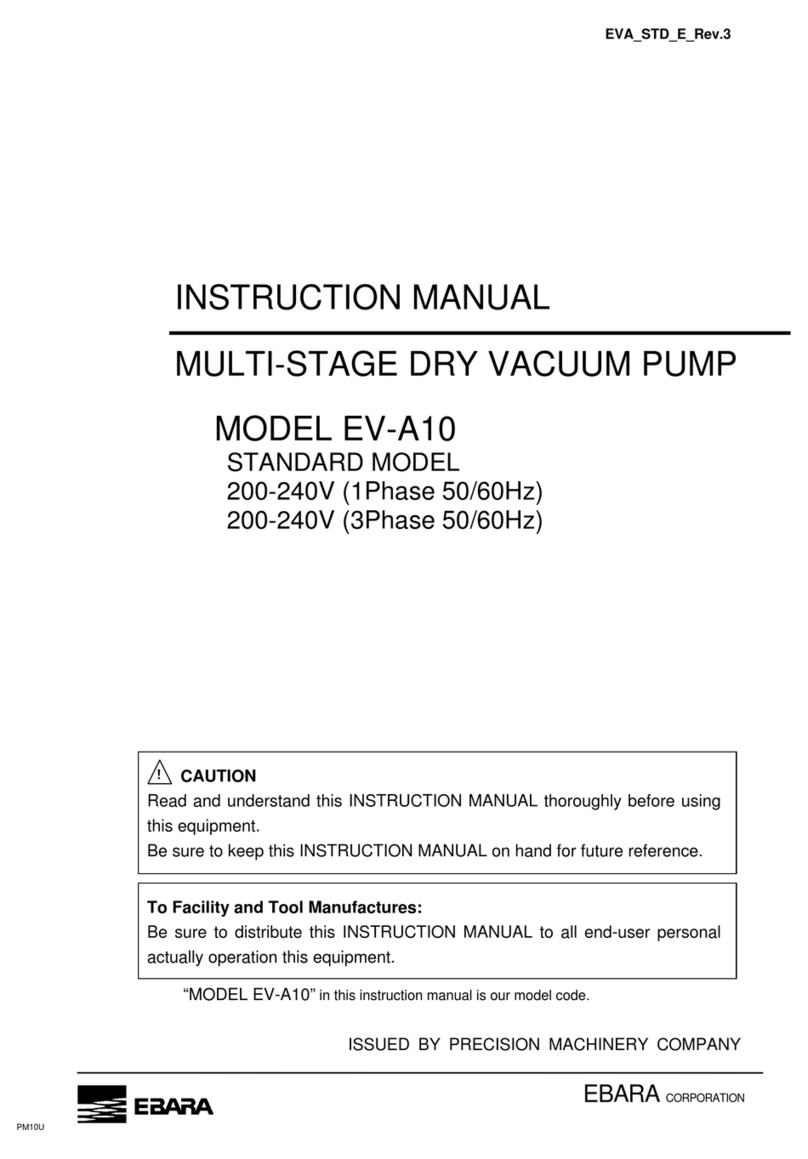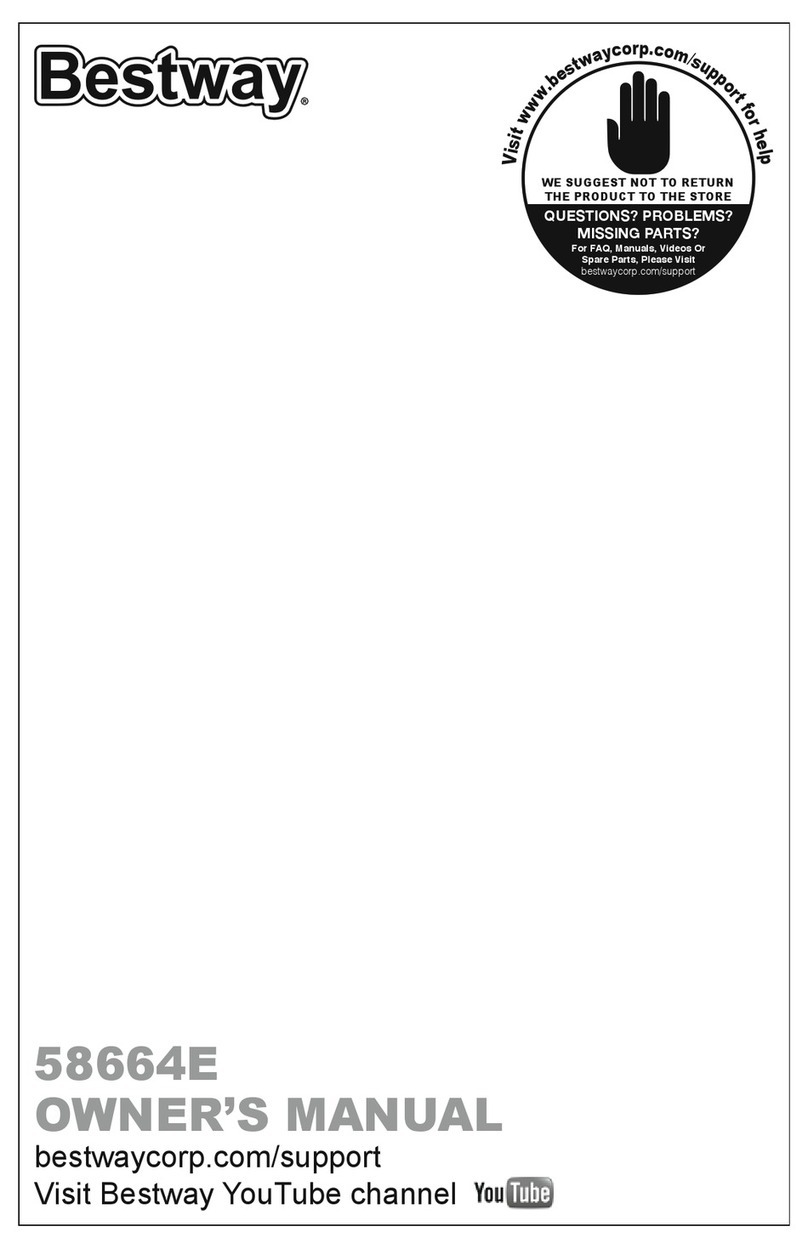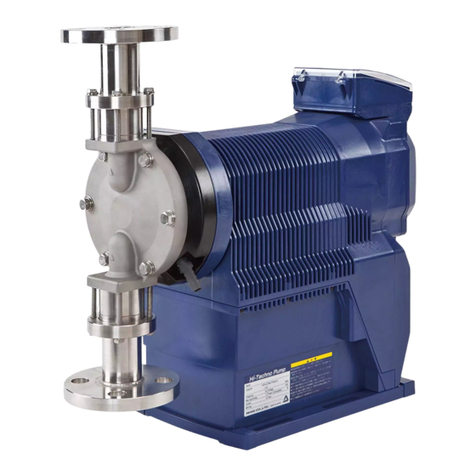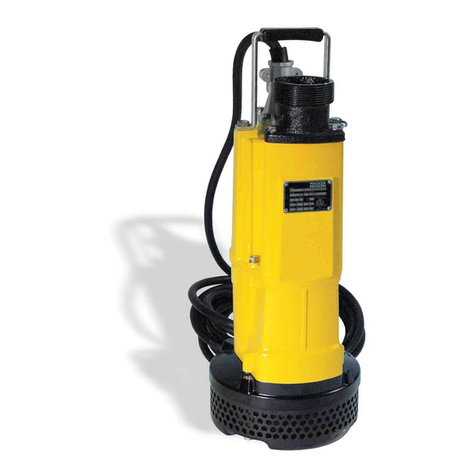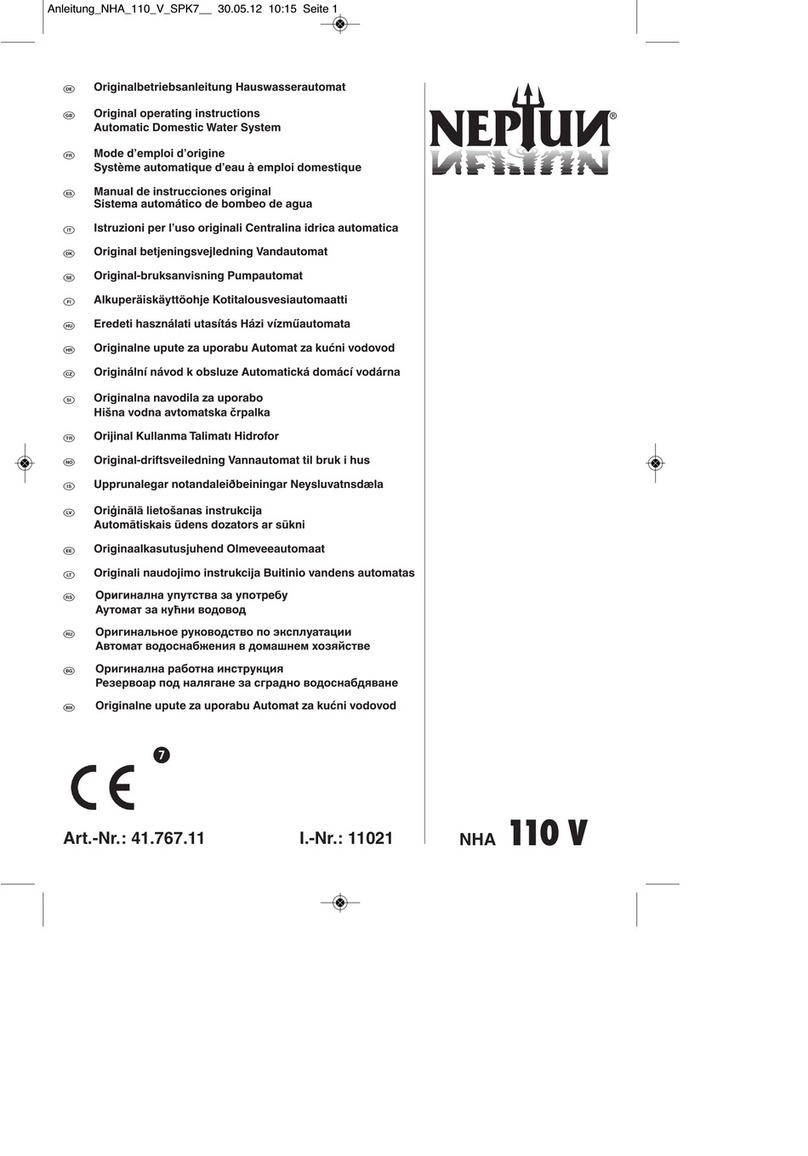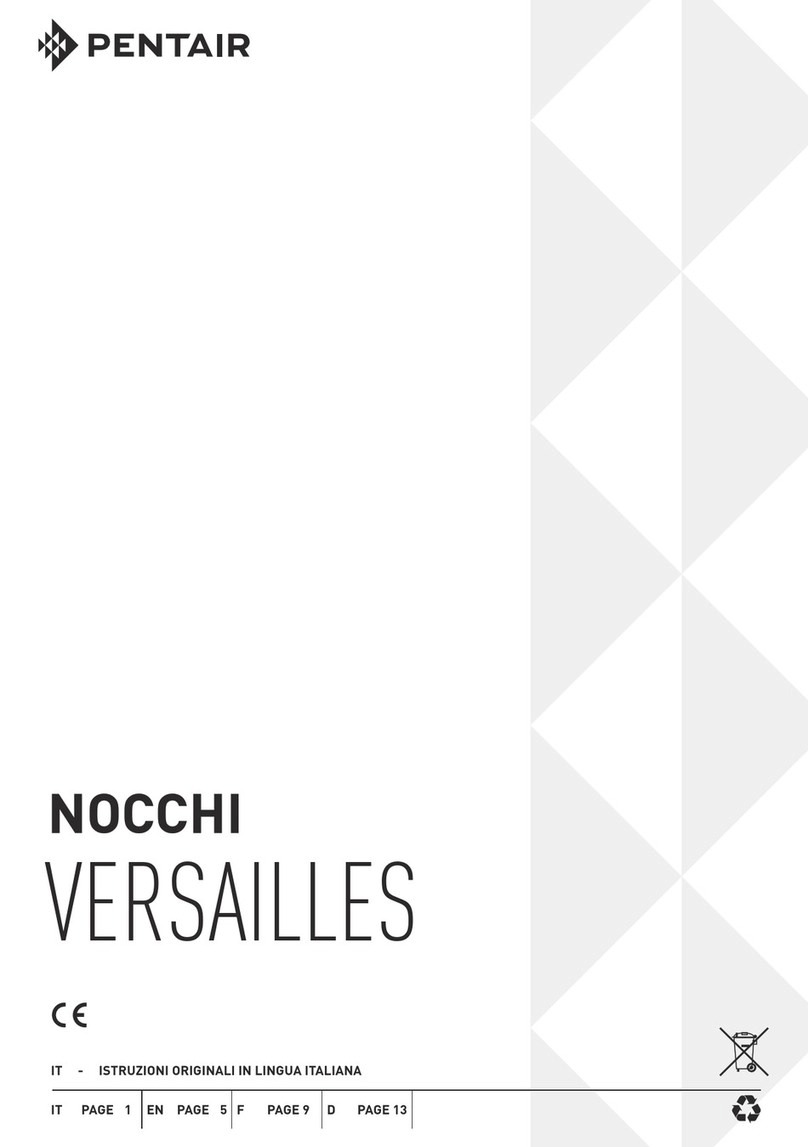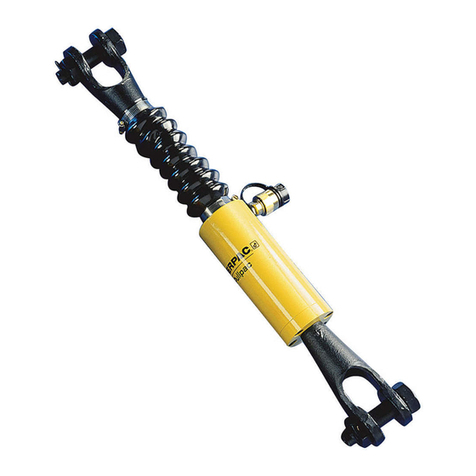NOTE: In Figure 1, the secondary chemical filter, vent line, and pressure regulator are optional under certain
conditions but are highly recommended.
1.1.3 CheckPoint recommends horizontal mounting for the Series 5400/8400 model pumps where possible. This
allows the suction check valve to have gravity assistance in closing. However, you may also mount the pump in
other orientations, subject to the condition that the chemical head should be no higher than level with the motor.
If mounting will be other than horizontally, you must use spring-loaded suction checks, which can be requested at
time of order or sent to you in the field.
NOTE: Under no conditions should the pump be oriented so the suction check valve is above the centerline
of the motor. Doing so may cause chemical leakage to collect on the motor, eventually to breach
the motor seals, and be atomized into the environment.
1.1.4 CheckPoint recommends use of a calibration gauge for your assurance of proper pump function and chemical
delivery rate. Please read the section in this Guide entitled 3.2.1 Setting Pump Speed Using a Calibration Gauge on
page 8 for more information. The proper position of the calibration gauge (labeled #5) is shown in Figure 1.
NOTE: It is necessary to attach a vent tube to the top of all calibration gauges, chemical tanks, and tank
level gauges. The height of the top of each vent tube should always be greater than the highest
possible liquid level in the system, and the tube should have means to prevent water entry, such as
a 180 degree bend.
1.1.5 The Series 5400/8400 does not require flooded suction or positive chemical pressure to prime, and can
therefore be mounted above the chemical container. For a chemical with average viscosity, the pump will pull air
out of the chemical line and prime from up to twelve feet above the liquid level in the tank. This feature is dependent
upon proper packing adjustment and adherence to all points made in Paragraph 1.1.6 below.
1.1.6 ALL VALVES, FITTINGS, AND PIPING BETWEEN THE SOURCE OF CHEMICAL AND THE PUMP’S SUCTION
CHECK VALVE MUST BE 100% BUBBLE-TIGHT AND FULLY COMPATIBLE WITH THE CHEMICAL BEING DELIVERED
AND WITH EACH OTHER. FAILURE TO ADHERE STRICTLY TO THIS RULE WILL LEAD TO GAS BUILD-UP IN THE
CHEMICAL HEAD AND LOST PRIME. SPECIFICALLY:
1.1.6.1 Any fitting or screw-on joint without Teflon™ tape or other acceptable sealant may allow air at
atmospheric pressure to enter the suction tubing, even if no chemical leakage is visible.
1.1.6.2 Dissimilar metals, when joined together in the suction pipe work may react with each other, creating gas
bubbles that will end up being carried into the pump head. CheckPoint generally recommends all suction
components, including all tubing, piping, fittings, and valves, be of similar material, preferably stainless steel or
other chemically resistant metal.
1.1.6.3 Incompatibilities between the chemical and the metallic elements in the suction pipe work can also create
such gas bubbles. In particular, some acids require Hastelloy™ or PVC fittings and tubing, while other chemicals
may only require 316 SS.
1.1.7 The pump may be clamped to a skid or other surface in a number of ways, however, clamping around the
outside of the pump reduces accessibility during maintenance and troubleshooting and is therefore not
recommended.
1.1.8 Always check to ensure that all process block valves (labeled as nos. 2, 3 & 7 in Figure 1) are closed prior to
disconnecting or re-installing any chemical injection pump. There should always be a block valve placed between a
properly installed pump and the process flow, the gas supply, the chemical supply, and, in the case of Gas Recovery
models, the gas recovery outlet. Conversely, while the pump is running, all such block valves should always be open.














